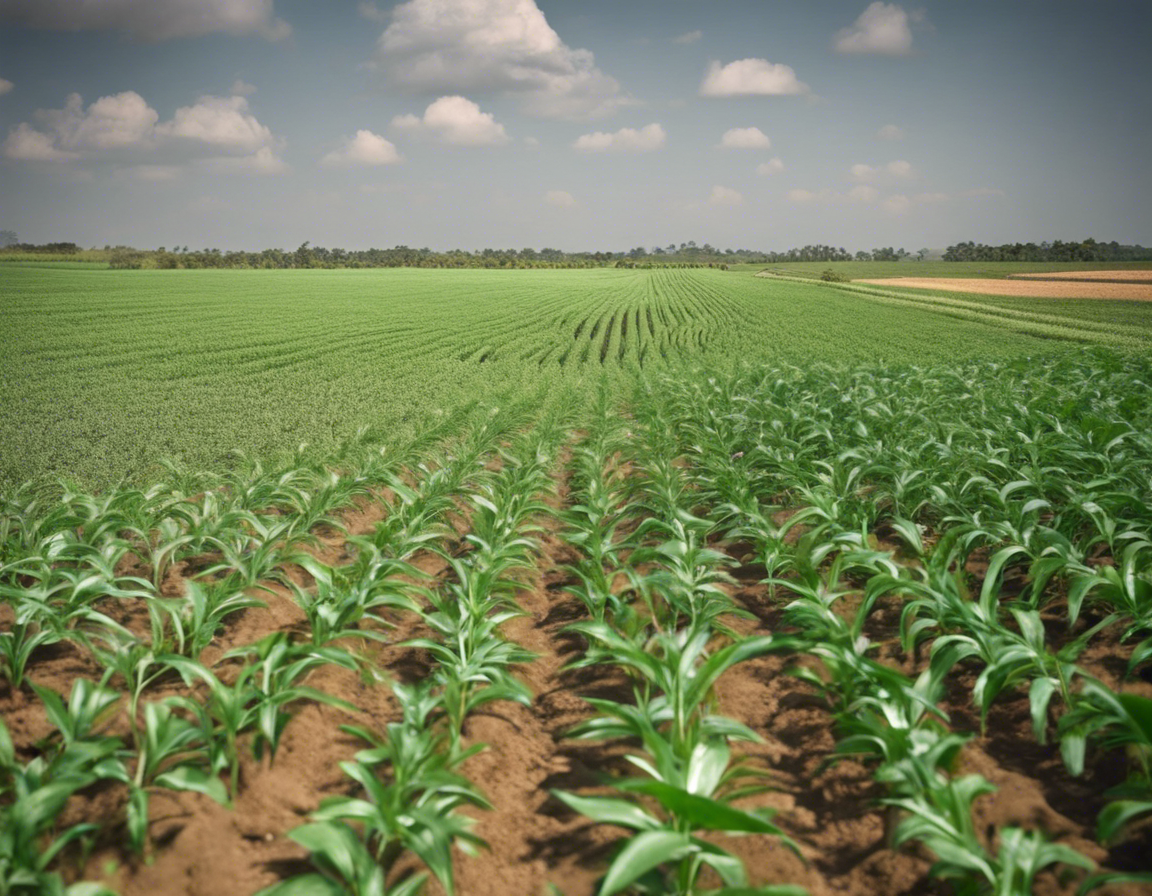Analyzing Crop Life Science’s Share Price Movement
In the stock market, Crop Life Science (CLS) is a well-known player in the agricultural industry, with a focus on developing innovative solutions for farmers. As an investor or someone interested in financial markets, understanding the factors that drive the movement of a company’s share price can provide valuable insights for decision-making. In this blog post, we will delve into the analysis of Crop Life Science’s share price movement, exploring various aspects that can influence its stock performance.
Factors Influencing Crop Life Science’s Share Price
1. Earnings Report:
One of the primary drivers of a company’s share price movement is its quarterly earnings report. Investors closely monitor revenue growth, profit margins, and future guidance provided by Crop Life Science to assess the company’s financial health and growth prospects.
2. Market Sentiment:
Market sentiment plays a crucial role in determining the direction of a stock. Positive news such as product innovation, strategic partnerships, or regulatory approvals can drive investor confidence and push the share price higher.
3. Competitive Landscape:
Analysis of Crop Life Science’s position in the market relative to its competitors is essential. Market share, pricing strategies, and technological advancements compared to peers can influence the company’s stock performance.
4. Macroeconomic Factors:
External factors such as macroeconomic indicators, interest rates, inflation, and global economic conditions can impact the overall stock market performance, including Crop Life Science’s share price.
5. Regulatory Environment:
Changes in regulations related to agriculture, environmental policies, or biotechnology can have a significant effect on Crop Life Science’s business operations and stock valuation.
Technical Analysis of Crop Life Science’s Stock
1. Moving Averages:
Analyzing the stock’s moving averages, such as the 50-day and 200-day moving averages, can help identify trends and potential buy or sell signals.
2. Relative Strength Index (RSI):
The RSI indicator is used to measure the speed and change of price movements. An RSI above 70 indicates overbought conditions, while below 30 suggests oversold conditions.
3. Volume Analysis:
Monitoring trading volume can provide insights into the strength of price movements. A surge in volume accompanied by price increase indicates strong buying interest.
4. Support and Resistance Levels:
Identifying key support and resistance levels can help determine potential entry and exit points for traders. These levels are often based on historical price data.
Fundamental Analysis of Crop Life Science’s Stock
1. Valuation Metrics:
Key valuation metrics such as Price/Earnings (P/E) ratio, Price/Sales (P/S) ratio, and Price/Book (P/B) ratio can help investors assess whether the stock is undervalued or overvalued.
2. Profitability Ratios:
Analyzing profitability ratios like Return on Equity (ROE), Return on Assets (ROA), and Gross Margin can provide insights into Crop Life Science’s operational efficiency and financial performance.
3. Debt Levels:
Evaluation of the company’s debt levels and debt-to-equity ratio is crucial to understand its financial leverage and solvency.
4. Growth Prospects:
Assessing Crop Life Science’s growth prospects through factors like revenue growth rate, new product developments, and expansion plans is vital for long-term investment decisions.
Frequently Asked Questions (FAQs)
1. Does Crop Life Science pay dividends to its shareholders?
Crop Life Science’s dividend policy can vary, and the company may or may not pay dividends based on its financial performance and growth priorities.
2. How often does Crop Life Science release its earnings reports?
Crop Life Science typically releases its quarterly earnings reports every three months, providing updates on its financial results and outlook.
3. What are some key competitors of Crop Life Science in the agricultural industry?
Major competitors of Crop Life Science in the agricultural sector include companies like Monsanto, Syngenta, Bayer Crop Science, and DowDuPont.
4. How can I stay updated on Crop Life Science’s stock price movements?
You can track Crop Life Science’s stock price through financial news websites, stock market analysis platforms, and by setting up price alerts on trading apps.
5. What risks should I consider before investing in Crop Life Science?
Potential risks to consider when investing in Crop Life Science include regulatory changes, competition, market volatility, and macroeconomic factors affecting the agricultural industry.
In conclusion, analyzing Crop Life Science’s share price movement requires a comprehensive assessment of both technical and fundamental factors influencing the stock. By conducting thorough research and staying informed about the company’s financial performance and industry dynamics, investors can make well-informed decisions regarding their investment in Crop Life Science.

Recent Comments